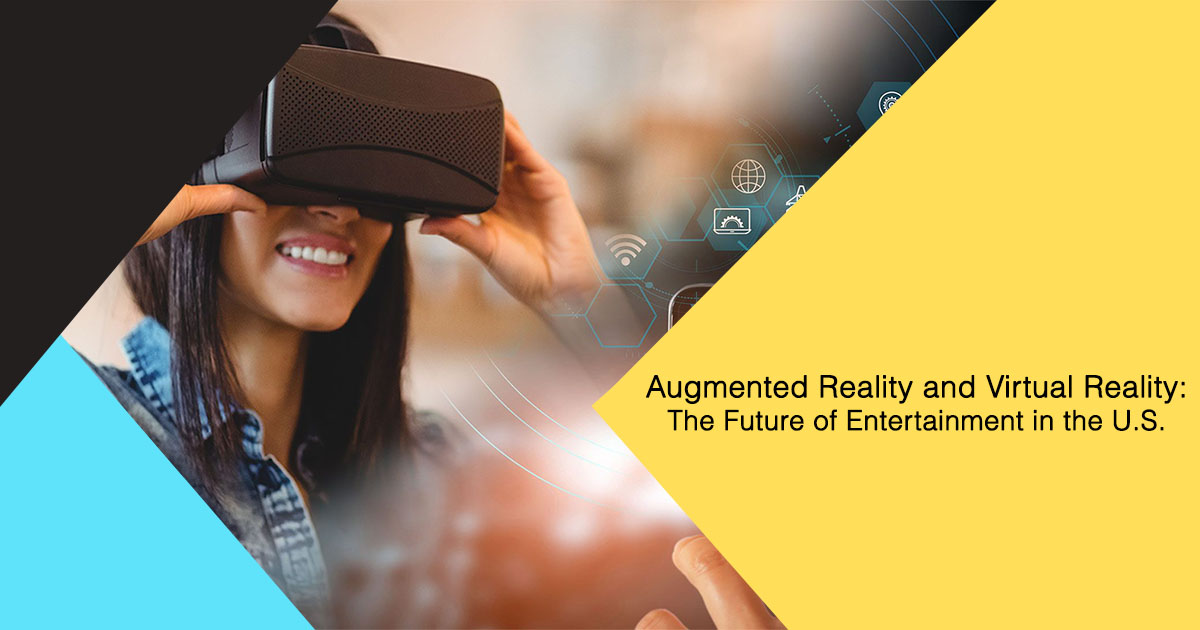Augmented Reality and Virtual Reality: The Future of Entertainment in the U.S.

AR and VR are transforming the entertainment industry by creating immersive experiences that merge digital content with the real world (AR) or place users in entirely simulated environments (VR). These technologies are being integrated across multiple entertainment platforms, redefining how audiences interact with content.
Key Applications in Entertainment
1. Gaming
- VR Gaming: Games like Beat Saber and Half-Life: Alyx immerse players in fully interactive virtual worlds.
- AR Gaming: Mobile games such as Pokémon GO blend the digital and real worlds, creating location-based experiences.
- Future Trends: Multiplayer VR worlds and cross-platform AR/VR experiences.
2. Immersive Storytelling in Film and TV
- Virtual Cinemas: VR headsets allow audiences to watch movies in 360-degree environments, simulating theaters or fantastical worlds.
- Interactive Narratives: Platforms like Oculus TV and apps like Within let viewers participate in the story.
- AR in Shows: AR apps provide behind-the-scenes content or extend storylines beyond the screen.
3. Live Events and Performances
- Virtual Concerts: Artists like Travis Scott (in Fortnite) and Ariana Grande have held concerts in virtual spaces, attracting millions.
- AR-Enhanced Shows: Real-time AR effects enhance live performances for in-person and remote audiences.
- Hybrid Experiences: Combining AR/VR with physical attendance for immersive event participation.
4. Sports and Esports
- Immersive Viewing: VR lets fans watch games from unique perspectives, such as courtside seats, from anywhere in the world.
- AR Overlays: AR apps display real-time stats, replays, and interactive content during live sports broadcasts.
- Esports Integration: VR esports games and AR-enhanced gameplay experiences are gaining popularity.
5. Theme Parks and Location-Based Entertainment
- VR Rides: Parks like Universal Studios and Disney use VR to simulate fantastical rides and adventures.
- AR Experiences: Location-based AR attractions overlay digital characters and stories on real-world settings.
6. Social Experiences
- Virtual Social Spaces: Platforms like Meta's Horizon Worlds and VRChat allow users to socialize in shared virtual environments.
- AR Filters and Effects: Social media platforms like Snapchat and Instagram use AR to enhance interactions.
Technological Advancements Driving AR and VR Entertainment
- Hardware: Improved VR headsets (e.g., Meta Quest 3, PlayStation VR2) and AR glasses (e.g., Apple Vision Pro).
- 5G Networks: High-speed, low-latency connectivity enables real-time AR/VR streaming.
- AI and Machine Learning: Enhance realism, interactivity, and personalization in virtual experiences.
- Haptics and Wearables: Devices that simulate touch, motion, and physical feedback add layers of immersion.
Impact on Consumer Behavior
- Engagement: Immersive experiences lead to longer engagement times and deeper emotional connections with content.
- Accessibility: AR/VR technology is becoming more affordable, broadening access to diverse audiences.
- Monetization Opportunities: Subscription services, virtual goods, and exclusive content are creating new revenue streams.
Challenges to Adoption
- Cost of Entry: High prices for premium AR/VR devices may limit initial adoption.
- Content Availability: The success of AR/VR depends on the development of compelling, high-quality content.
- Technological Limitations: Battery life, comfort, and resolution need ongoing improvement.
The Future of AR and VR Entertainment in the U.S.
- Metaverse Expansion: AR/VR will play a central role in the development of the metaverse, a persistent virtual universe for social, work, and entertainment purposes.
- Personalized Experiences: AI-driven AR/VR will tailor content to individual preferences and behaviors.
- Cross-Industry Integration: Collaboration with industries like education, healthcare, and retail will drive innovation in entertainment.
AR and VR are not just tools for entertainment; they are becoming platforms for storytelling, social connection, and creative expression, promising a future where audiences are active participants in the content they consume. Would you like to explore a specific sector or example in more detail?









